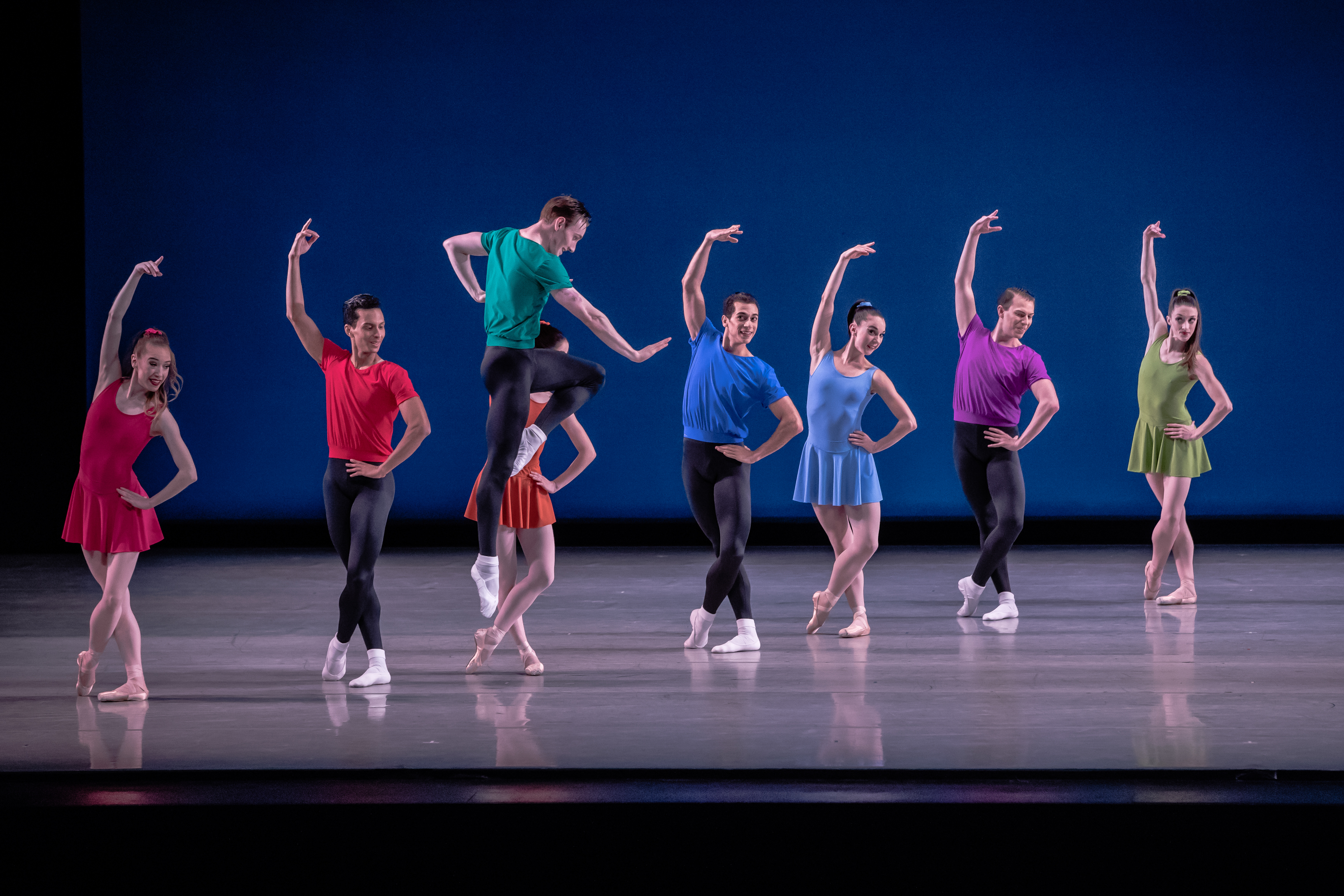KANSAS CTY, MO — Kansas City New Dance Partners is an initiative launched in 2013 at Johnson County Community College (JCCC), located in the sprawling suburbs on the Kansas side of the two cities who share the same name. The goal of New Dance Partners is to elevate the local dance scene and bring it to the attention of students, as well as Kansans reluctant to venture downtown. Each year, a select group of local (and sometimes regional) dance companies are paired with reputable choreographers from across the county to create new works, and Friday’s showcase at the magnificent Kauffman Center for the Performing Arts treated members of the Dance/USA national service organization to a version of the initiative as the main stage event of its annual conference. It’s important for mid-size cities to host companies on tour from the coasts or Europe to seek inspiration, but — similar to Dance St. Louis’ New Dance Horizons initiative on the other side of Missouri — New Dance Partners invests in Kansas City’s home companies to bring out their best and raise the bar locally. The high caliber of the project’s choreographic commissions serve another purpose, too: projecting Kansas City’s profile outward and affording this small but robust community a megaphone to say, “Hey! There’s good dance here!” So it is likely that Dance/USA conference goers were surprised by the New Dance Partners showcase, which only goes toward proving its purpose for this city’s growing dance scene.

As the main curtain opened, a single incandescent bulb sat atop a pedestal lamp, dimly illuminating the stage as dancer Kaleena Burks entered for Penny Saunders’ Ghost Light, a New Dance Partners’ 2014 commission for Owen/Cox Dance Group. There’s little evidence here of Saunders’ career lately as a dancer and choreographer with Hubbard Street Dance Chicago; Ghost Light is definitively balletic, its details soft and nostalgic. Regardless if Saunders is leaning toward ballet or contemporary, she has a knack for envisioning beautiful atmospheres on stage, brought to life here by the design team of Scott Bolman (lighting) and Lisa Choules (costumes). Ghost Light has a vintage vibe, supported by a patchwork score of Bach and big band as three men twist and tangle themselves through an elaborate series of partnering with Burks and the long train of her evening gown. At times this ratio created an imbalance of power, giving the impression that Burks was being teased and taunted by these ghosts, poked at and prodded, giving her pause illustrated by gestures like a hand to the throat or a palm to the forehead. But on enough occasions, it became clearer that these men are not quite men, but ghouls over which Burks is mistress; ultimately it is she who controls them.
Gregory Dawson’s Twisted Metal exploits everything Wylliams/Henry Contemporary Dance Company’s dancers can do – from the near-naked gleam of their chiseled bodies under Burke Brown’s auburn lights, to pliés so deep they could sit, standing up. Twisted Metal‘s finale is dedicated to just that: a display of pure Dance, capital D. It’s not unwelcome, but less interesting, perhaps, then the lead-up to there in which we sense anger, defiance, and tenacity at play — not against one another, but toward a common goal, and at time, against self. Shadow boxing toward the sky, guttural tones emerging from shuddering bodies, and (almost always) an attempt to move to the periphery of the body and get as far away from oneself as one might… these images spoke more strongly than Twisted Metal‘s satisfying dance phrases at the end.

Without my program in hand, Kansas City Ballet’s entrance for the evening’s final piece gave me a gut reaction of, “Wow, this is really dated and looks like Jerome Robbins.” Turns out, Interplay is indeed dated (debuting in 1945), and by Jerome Robbins. Though KC Ballet is part of New Dance Partners, the plotless ballet about child’s play is not, and appeared on the company’s spring “Director’s Choice” program last month. Interplay puts recess games on pointe, with audiences taken on a happy-go-lucky jaunt that includes “follow the leader,” hopscotch, patty-cake, and an occasional cartwheel. That’s cute, but also kind of weird performed by grown adults. Recognizing that this is a historical work by an important choreographer, it’s easier to forgive the cliche trappings of this short ballet, and seeing it in 2017 points to the vast differences between now and then in terms of how childhood is perceived and illustrated. Cartwheels and all, the work is well-danced by its eight cast members, expertly staged by former New York City Ballet principle Judith Fugate (who has previously set Robbins’ Face Free and George Balanchine’s Allegro Brilliante on the company), and a joyful end to a rich evening of dance.
